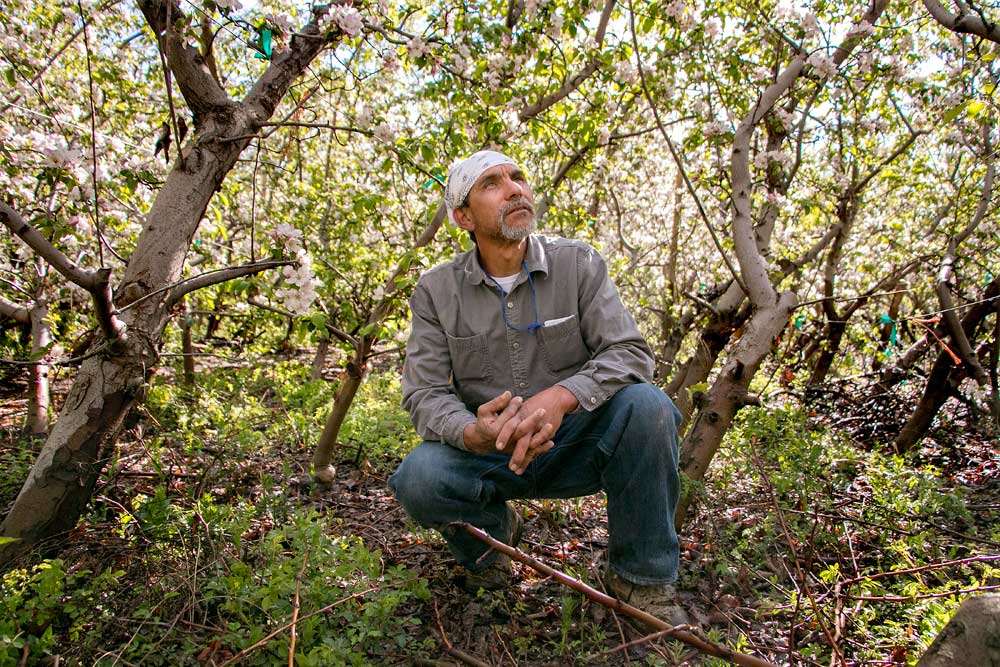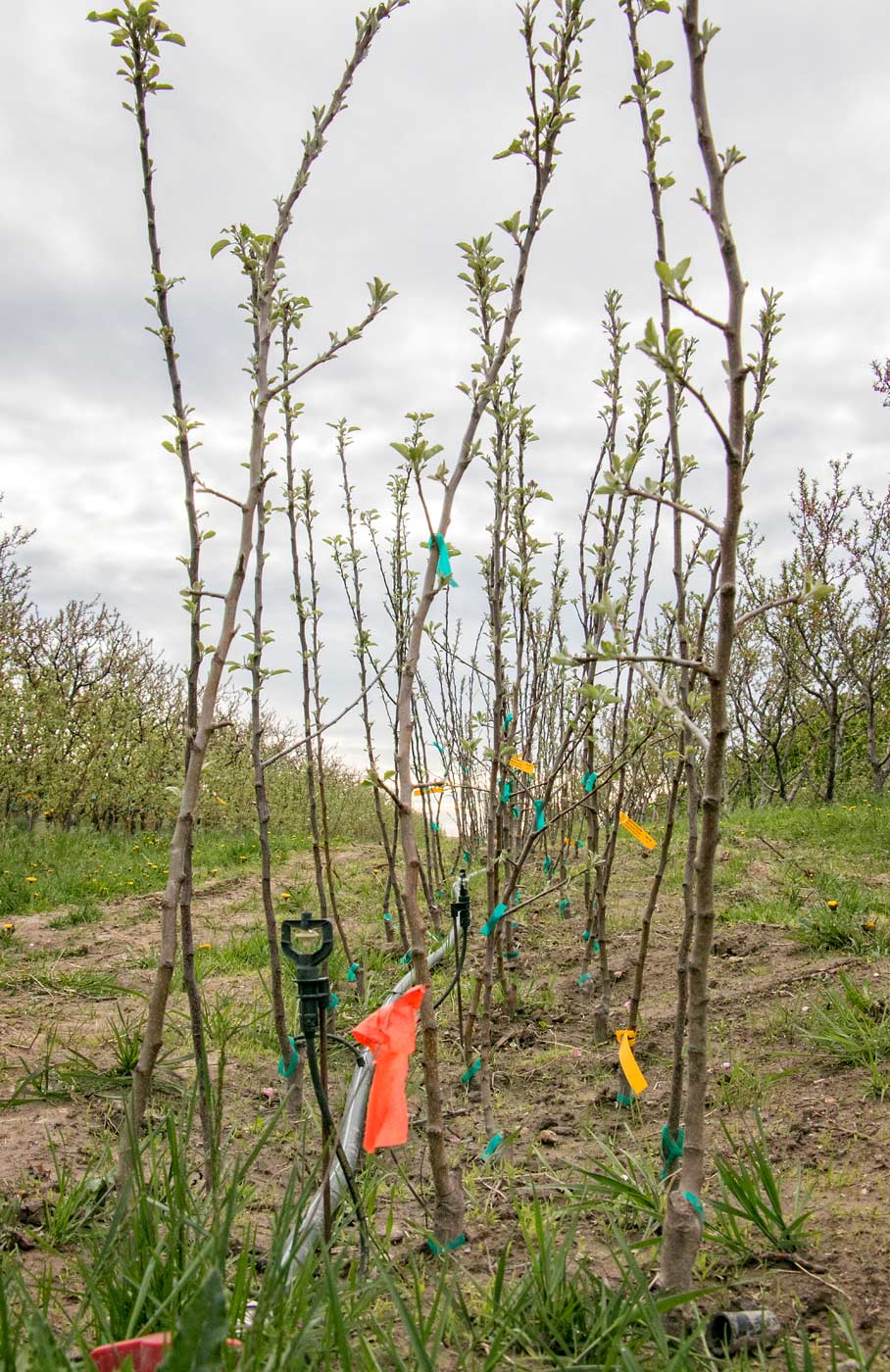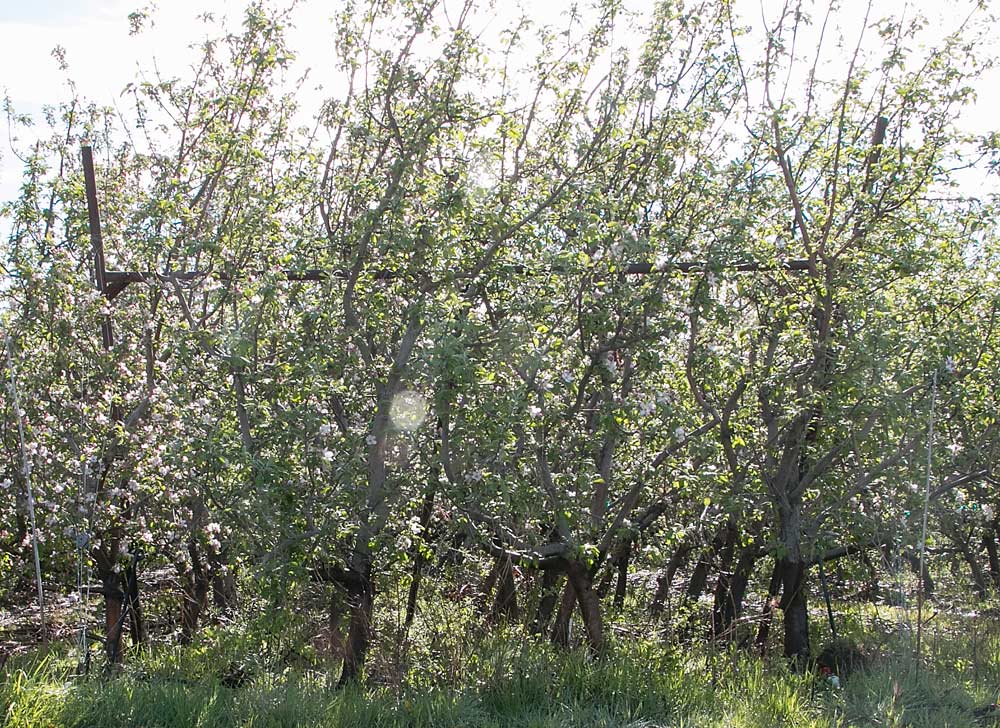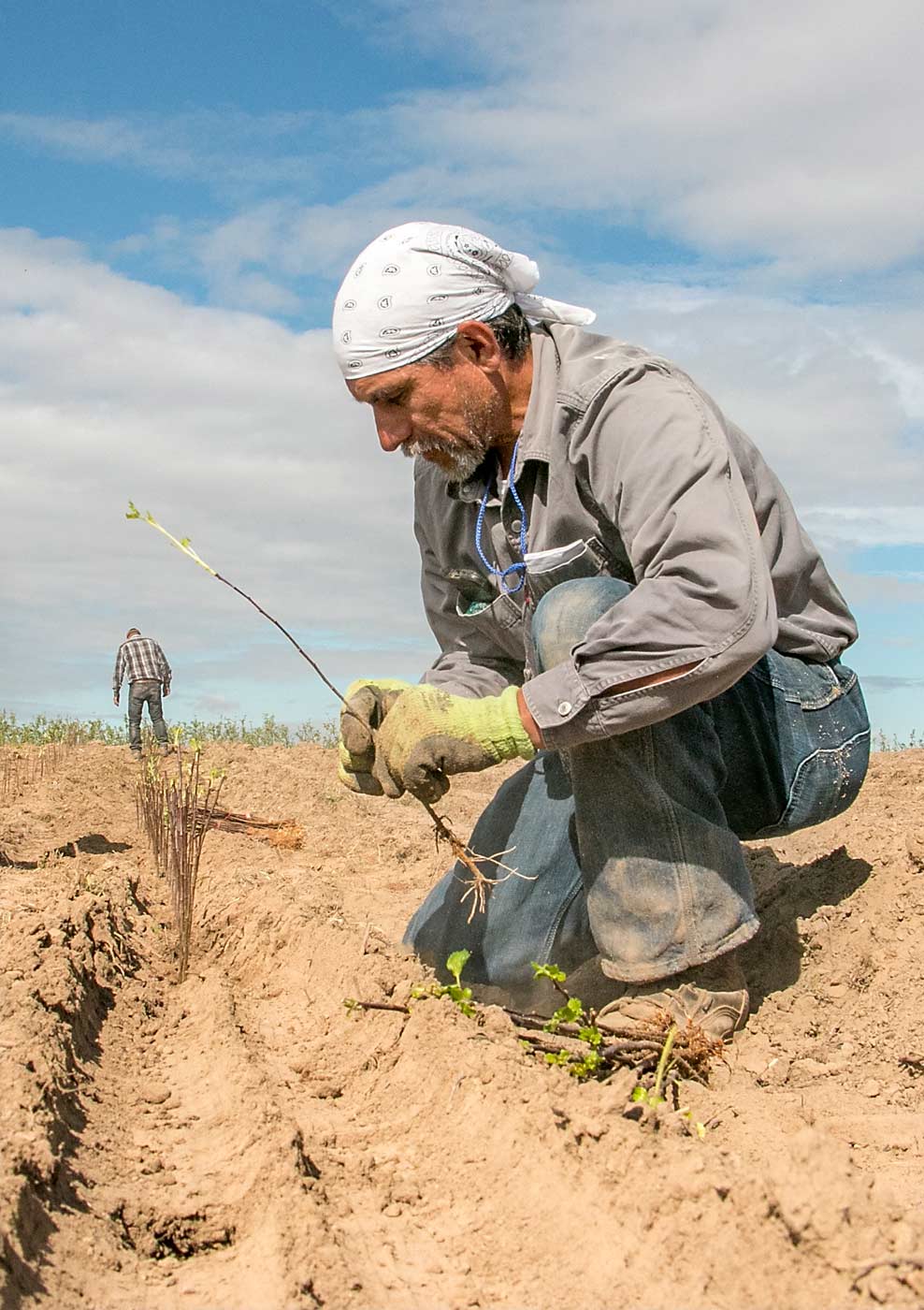
On White Trail Road near Quincy, Washington, just past a development of small homes and a golf course, Roberto Guerrero grows fruit in unusual ways.
The 50-year-old orchardist has triple and quadruple rows, he swears off overhead cooling and sun protectants, and he does not attend university field days where researchers present their latest findings.
“I make it work,” he said, attributing his quirkiness to a mixture of curiosity and stubbornness. “That’s my challenge. That’s how I am different. I’m going to make sure to make it work. That’s my philosophy.”
Guerrero is celebrating 20 years as the owner of ACMA Mission Orchards, a 74-acre farm located in the Columbia Basin region of Central Washington, which is dominated by industry giants such as CMI Orchards and Stemilt Growers. He added smaller orchards in Chelan, East Wenatchee and a second Quincy location later for a total of 118 acres.

And different though he may be, he points to a historical influence he shares with most of the state: Grady Auvil, considered one of the pioneers of Washington’s apple industry.
About those quadruple rows? Auvil’s idea, Guerrero said. They are in Guerrero’s 19-year-old block of Granny Smiths, the first trees he planted on his own farm. Auvil had experimented a lot with planting multiple lines of trees in each row, a practice not widely used now.
Guerrero suspects he may have the only commercially grown quadruple row in the United States. He has kept the block partly in homage to Auvil, partly just to prove he can and partly because they produce. The trees have twice won him fruit quality awards from his packer, Blue Bird in Wenatchee.
“I want people to think that everything is possible and you don’t have to give up,” he said. “I don’t give up so easily.” He also has a block of 2-year-old Honeycrisps in a triple row.
He likes the production he gets from the high densities of multiple rows and aims for 200 bins per acre someday.
Multi-row systems started in Holland in the 1970s as a way to dramatically increase tree density, said Karen Lewis, a Washington State University tree fruit regional extension specialist. However, they fell out of favor when growers grew frustrated with the upper limbs robbing the lower fruit of sunlight. Growers in Washington reported the increased densities did not offset the hassle — and extra cost — of getting between the trees for weed management and harvest.
“I am careful to not say that this system does not perform,” said Lewis, who has not met Guerrero. “It might perform, and it might perform at a level that meets or exceeds your goals. As in all systems, it is about getting the tasks done, done correctly and on time.”
Few, if any, growers use triple rows in New York, either, said Mario Miranda Sazo, Cornell University Cooperative Extension fruit specialist. The last one he knew of recently replaced all triple rows with super-spindle.
Guerrero manages the light and spray penetration problems by keeping his branches small, about the size of a pencil.
Shane Dillard, a Blue Bird field representative who has worked with Guerrero, knows of only a few pear growers in North Central Washington who use triple rows, but no other apple growers.
Dillard also is surprised at how tall and bushy Guerrero lets his trees grow, to use every inch of his property, and how aggressively he provides nutrition. As a result, he has healthy trees and a vibrant population of beneficial insects to resist disease and pest pressure.
“He’s just a different, unique grower,” Dillard said.
More novelties

Guerrero’s approach to growing tree fruit goes even further. He uses nothing but managed leaf shade and potassium in his soil to protect his fruit from sunburn, even though organic options are available. No overhead cooling. No netting. No protectants.
“It’s a waste of water and a waste of time,” he said. “I balance the soil and make my tree healthy and let them bush on top.” Besides, he figures he can afford say, 5 percent sunburn, with his production of 100 to 120 bins per acre and the organic premium.
Guerrero started out in the fruit business as a longtime employee of Auvil Fruit Co. For several years after purchasing his original orchard, he finished work in the afternoon and drove the hour to his new farm to tend to his young trees, sleeping in his pickup, hauling in water by truck and chilling his Keystone Light beer in irrigation ditches.
He spent much of his early years selling fresh produce at Seattle farm markets, using his income as cash flow. Sometimes, he earned up to $7,000 per day, sometimes as little as $70 — barely enough to afford the $30 table and gas in his truck.
“But I kept my customers,” he said. “That was my main reason.”
It was at one of those markets where he met his wife, Nicole Reed, a longtime customer practicing her Spanish who found herself attracted to his enthusiasm for produce.

Reed works in information technologies for Seattle’s Fred Hutchinson Cancer Research Center, dividing her time between Seattle and Quincy. A block near their home is named after their child, Pearl, who died 30 minutes after being born.
Both have adult daughters from previous relationships. Guerrero named his company, ACMA Mission Orchards, after his daughters Adriana Cristina and Melani Andrea. The “Mission” refers to his desire to open a homeless mission on the property someday.
Today, Guerrero has replaced many of his stone fruits and cherries with apples and switched to a 95 percent wholesale business, selling to Four Circle and Charlie’s Produce, as well as through Blue Bird.
Like many small growers, Guerrero has avoided debt since paying off his orchard, which he believes gives him more freedom than large farms that may have to answer to banks.
And not all Guerrero’s ideas are from left field.
Going with the industry norm, he is converting older varieties to newer, more profitable ones and moving toward higher densities and narrower canopies. In about three more years, when some of his Firestorm Honeycrisps are tall enough, he plans to build his own platform.
And though he avoids Washington State University’s field days, he’s not against learning. He aims to visit Italy someday to get new ideas about equipment. He just doesn’t want to follow the crowd.
“It doesn’t make any sense to be a farmer and follow other farmers,” he said. •






Leave A Comment